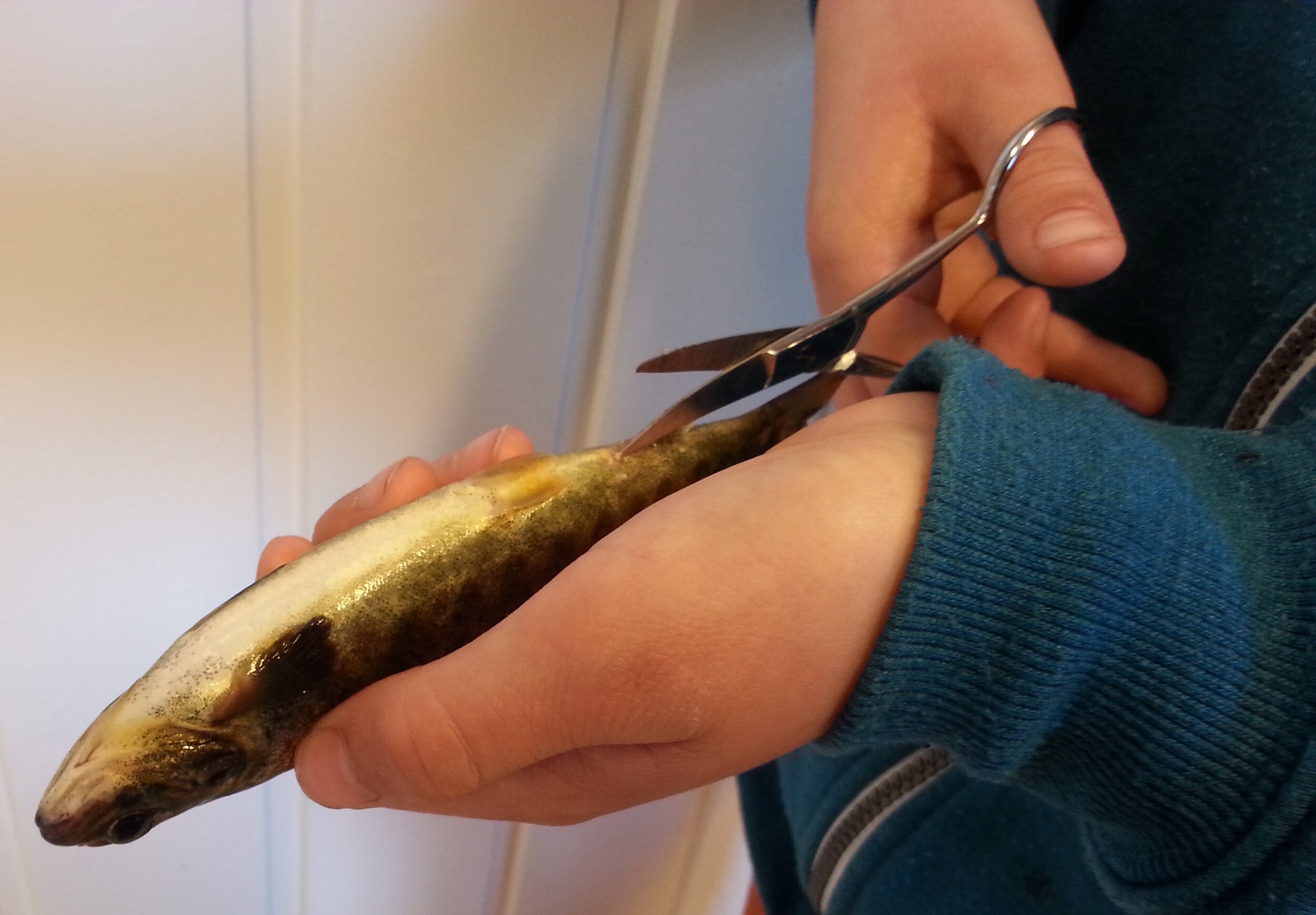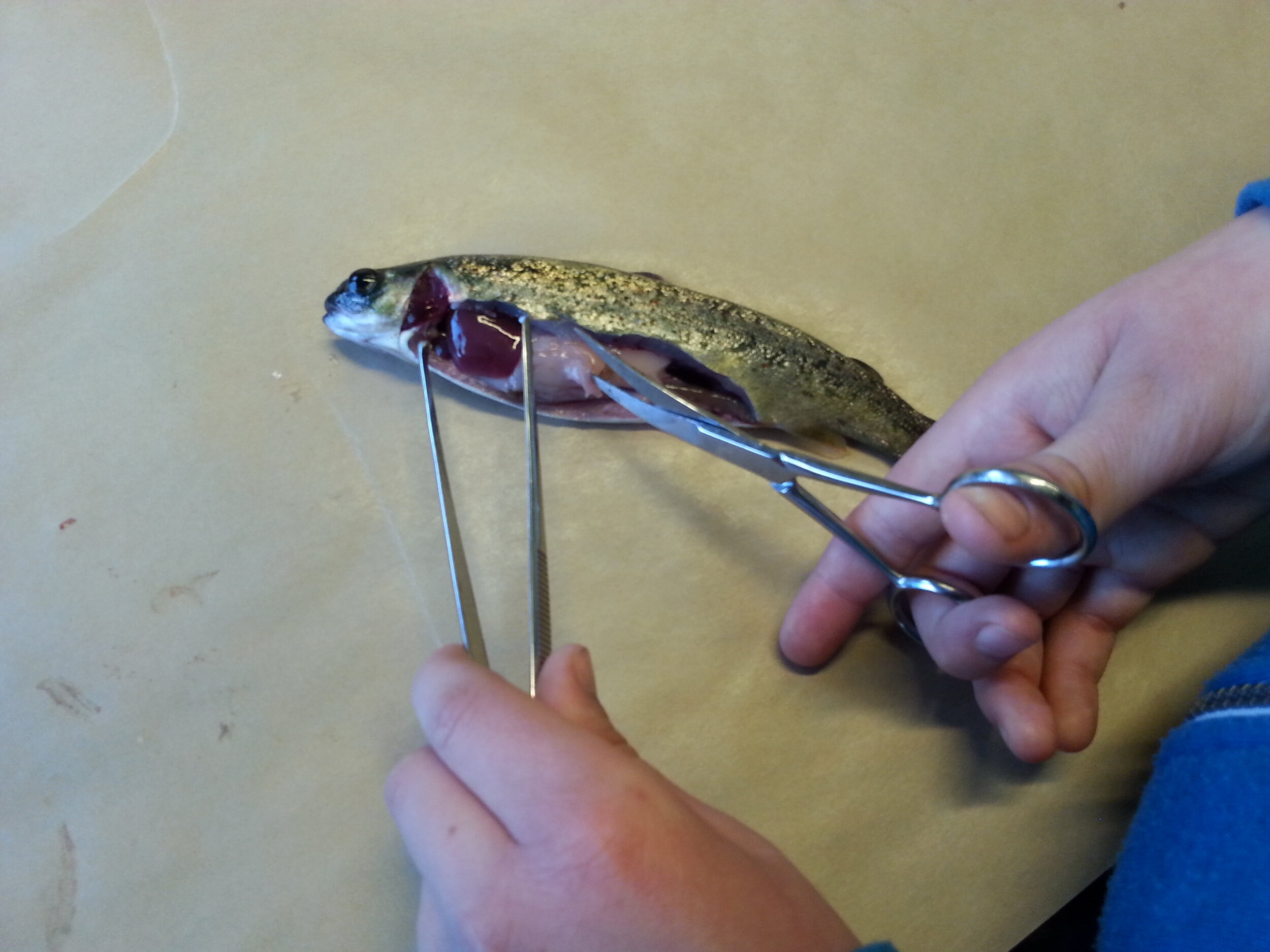Research a fish - dissection
Dissection means cutting open and finding various internal organs. For this task, you need to have access to a dead fish - it doesn't have to be a salmon.
Competency goals for grade 7, Science
- explain some of the body's organ systems and describe how the systems work together.
- explain how organisms can be divided into main groups and give examples of the characteristics of different organisms.
Fishing lures can be exciting! Photo: Tone Løvold
Task:
Studying a fish is exciting. It can be done both indoors and outdoors.
Most of the organs that we humans have can also be found in a fish. Many of the organs have the same function in fish and humans, even though they are not exactly the same or work in exactly the same way. On page 17 of the student booklet Who lives in your river? you can see how the internal organs are located in a salmonid and what the different organs do.
Before you start you need to have:
a fish
a pair of scissors or a knife
tweezers or a stick
on notice
paper towel
sheet to write in the organs
Here you can see some of the organs in a small farmed salmon. Photo: Tone Løvold
How to proceed
Open up the fish
If the fish is small, you can hold it in your hand and cut it open with scissors. If the fish is large, lay it on its side and use a knife or larger scissors. Use a newspaper as a base.
Expose the organs
Make sure the fish's head is pointing to the left. Then you will see most of the organs when you cut away the abdominal wall.
Explore
Now that you've exposed most of the organs, you can start exploring.
Find these organs:
Gills, heart, liver, appendix, spleen, intestine and kidney.
Write the names of the organs on the sheet you have been given. Once you have found all the organs, you can do some research. Find the stomach, open it and try to find out what the fish has eaten. You can cut out the eye and find the fish's lens. The lens is a tiny, round, glassy sphere. Study the teeth, gills, nose and so on. This can get a little messy. Make sure you have paper towels available.
This movie shows the dissection of a cod. There's a lot to learn here. It's a bit long, but you don't have to watch it all at once.
Teeth on the tongue!
Some fish have teeth on their tongue. Fish do not chew their food, but use their teeth to hold it in place. Teeth on the tongue are therefore smart. Trout have teeth on their tongue, but not salmon.
For the teacher
It can be an advantage to review the different organs before you start the dissection. On page 17 of the student booklet you will find a simple overview of the fish's organs. The student booklet is available for download at the bottom of the page.
This is the equipment you need:
- a fish
- a pair of scissors or a knife
- tweezers or a stick
- on notice
- paper towel
- sheet to write in the organs
Use whatever fish you have available - it doesn't have to be salmon. Either fresh fish or fish that has been frozen.
Student booklet
The Nasjonalt villakssenter works for a stronger wild salmon and wants to promote the stream as an educational resource. Bring experiences from the classroom and put them in context with experiences outside. Many schools in Norway have a local stream. Even in our largest cities, there are streams that can be visited. Contact us for assistance, tips and professional support.
The student booklet "Who lives in your river?" can help with both preparation and follow-up work.







